Art Fairs
South Korea’s Homegrown Fair, Kiaf Seoul, Strives to Win the Hearts of a Growing International Art Crowd
Experimental works with a biological bent stood out amid the commercial pieces dominating the regional fair.
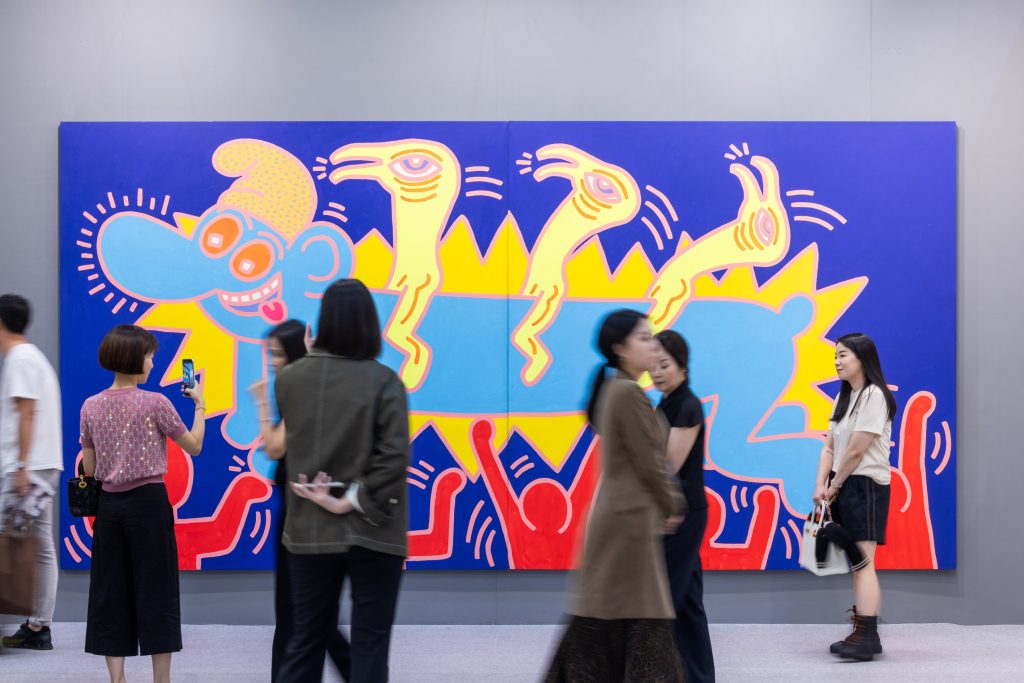
Experimental works with a biological bent stood out amid the commercial pieces dominating the regional fair.

Vivienne Chow

At one end of one of Seoul’s Coex exhibition halls, fair-goers have been placing silent bids on feces by an art collector, a dealer, and a critic featured in a conceptual installation work; across the other end of the aisle, eerie sound is generated from sculptures containing living bacteria and yeast that have caught the curious eye of visitors. But not everything on view at the VIP preview day of Kiaf Seoul, South Korea’s homegrown flagship art fair, was a biohazard.
At the convention complex in the South Korean capital’s up market Gangnam district, Kiaf (Korea International Art Fair), founded by the the Galleries Association of Korea, returned for its 22nd edition on Wednesday (September 6). It’s Kiaf’s second iteration of its partnership with Frieze Seoul, which opened on the same day in the same complex. Featuring a total of 210 exhibitors from 19 countries, Kiaf has expanded by 28 percent from last year’s total at 164. Thirty of the presenters were first-time participants.
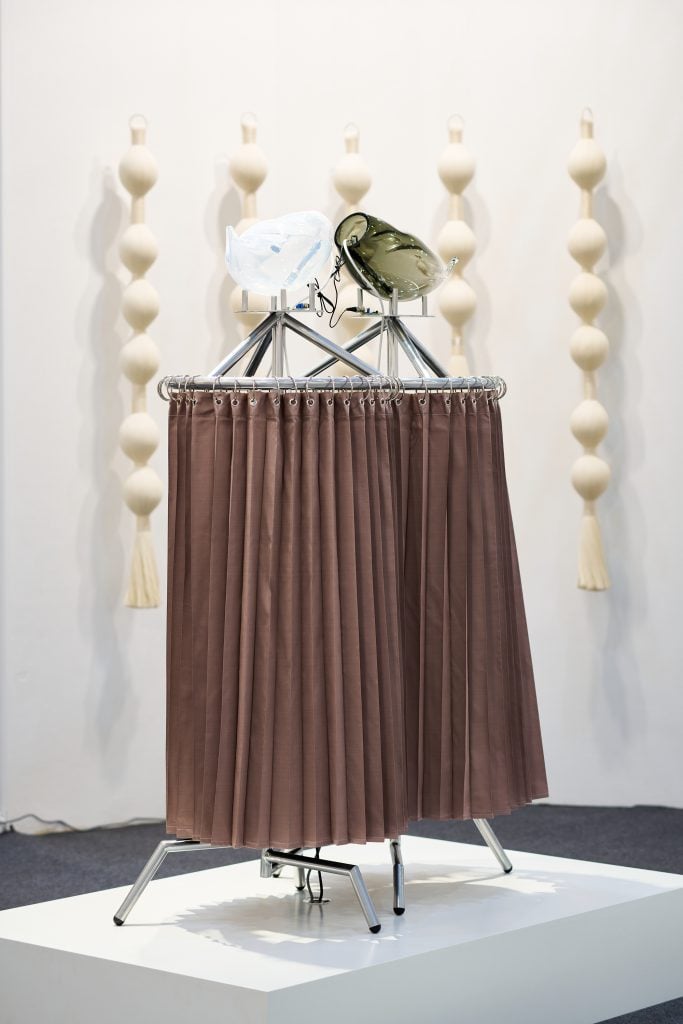
Amor Muñoz’s sound biosculpture series Hybrida at gallery Colector’s booth at Kiaf Seoul 2023. Courtesy Colector.
While nearby Frieze is positioned as a global fair, Kiaf has been traditionally seen as a regional fair featuring primarily Korean galleries catering to a local crowd. But this year, Kiaf organizers have made a conscious decision to boost the event’s international appeal. Booth prices at Kiaf, at 20 percent less than those at Frieze, were appealing to cost-conscious exhibitors. Organizers also tried to accommodate international exhibitors better by placing them at prominent locations and advised overseas galleries on what kind of art Korean collectors may like.
The number of international galleries grew by more than 33 percent from last year’s 60 to 80 this year, comprising nearly 40 percent of the total number of exhibitors. Foreign visitors, including many individual collectors and museum groups, also grew significantly following the removal of all Covid-related travel restrictions.
“Exhibitors have sold more to international collectors this year than in 2022,” Hwang Dalseung, chairman of the Galleries Association of Korea, told Artnet News. He added that both Kiaf and Frieze had learned from the previous edition and have smoother collaboration this year, coordinating the entry time of each fair’s VIPs so that they could visit both fairs on the same day. “But with us being a regional fair, how can we stand out?”
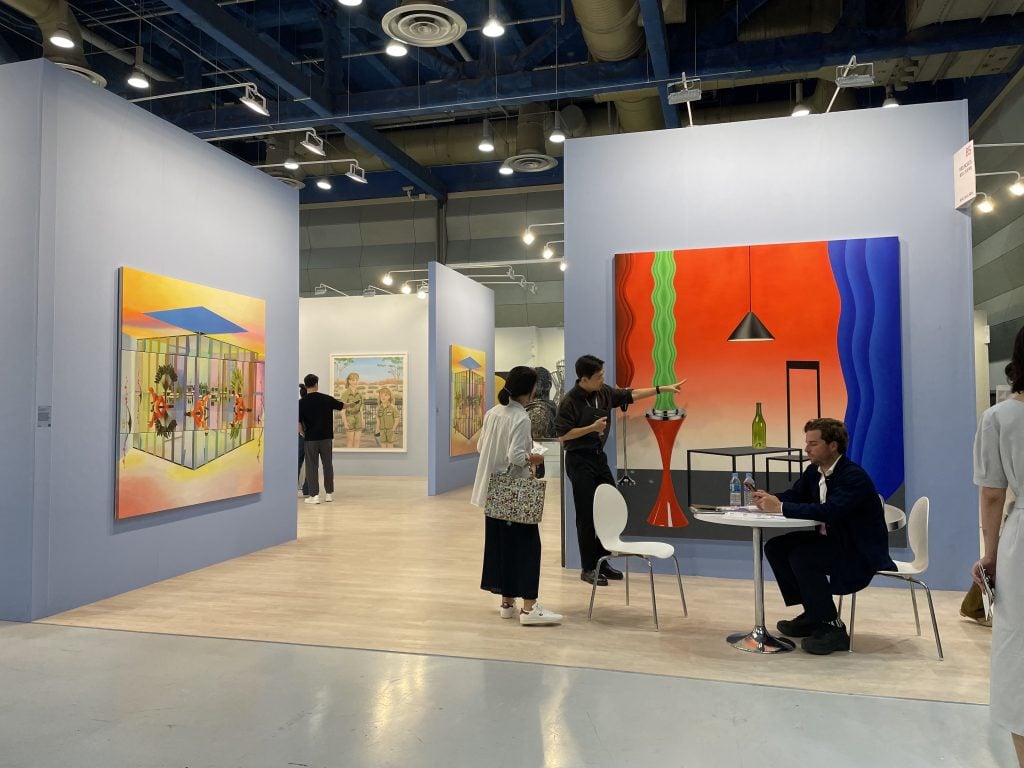
Peres Projects at Kiaf Seoul 2023. Photo: Vivienne Chow.
While many booths showed works that were aesthetically pleasing commercial pieces, some galleries tried to push the boundaries. First-time exhibitor Colector from Mexico’s Monterrey staged a solo exhibition of Mexican artist Amor Muñoz, whose work combining biology, technology, sound, and craft includes Hybrida, a sound sculpture series that incorporates data picked up from the fermentation of yeast and bacteria into sound. Trained as an architect, the gallery’s director, Jesús Alberto Flores, designed the booth drawing inspirations from Taegeukgi, South Korea’s national flag, for its debut in the country. The gallery sold works ranged $14,000 to $20,000 to Hong Kong- and Taipei-based clients. “We don’t just want to show paintings and sell, we want to provide information and introduce our artist to the audience here,” Flores told Artnet News.
Gallery Shilla, which operates in Daegu and Seoul, called its booth “The Great Shit Show.” The group presentation features a version of Italian artist Piero Manzoni‘s Artist’s Shit (1961), a group of 100 drawings based on the image of used toilet paper by Sung Neung Kyung, and a series of installation works by art collective El Grupo X, with each sealed can allegedly containing lyophilized feces from a different anonymous art world figure, including a collector, an art critic, a director, and a dealer. Fair-goers are invited to place a silent bid on each can of treated feces until the fair closes on Sunday. As of Thursday afternoon, the work Collector’s Shit received the highest bid at $100.
“It questions the value of art, whether it is based on biological value or social value,” said Lee Joon Yub, director of Gallery Shilla. He added that the feces contained in Director’s Shit came from him.
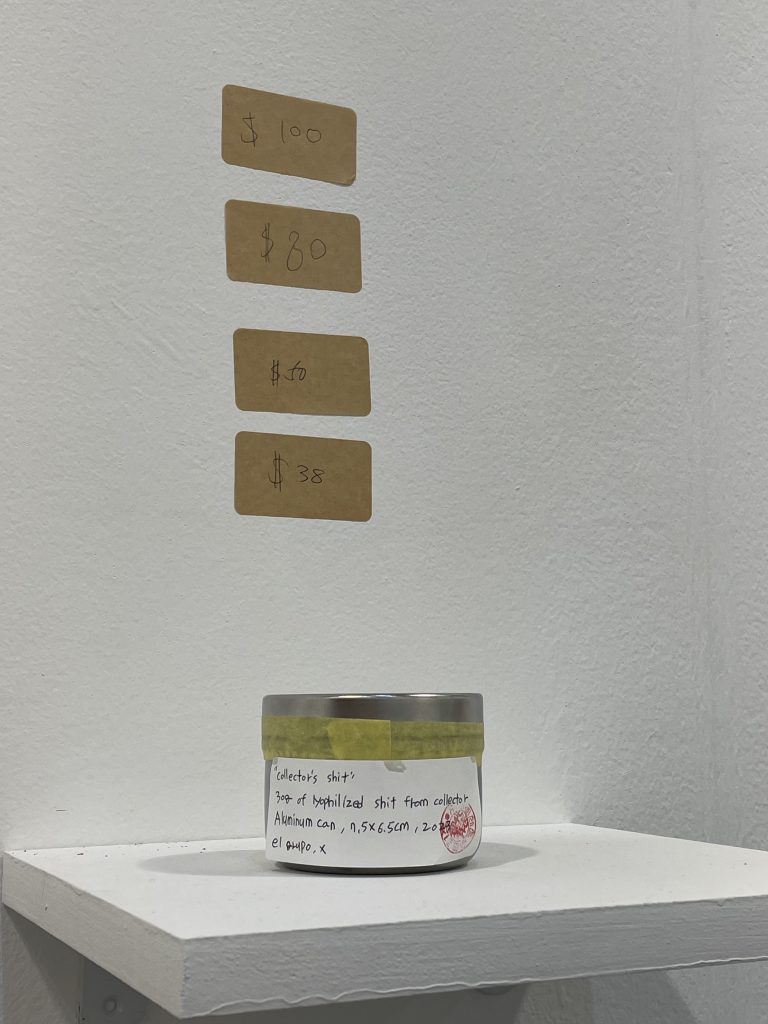
El Grupo X, Collector’s Shit, featured in Gallery Shilla’s “The Shit Show.” Photo: Vivienne Chow.
The shaky macroeconomic climate in recent months may have motivated exhibitors to up their game. The economic downturn in South Korea and the art market correction could be felt on the ground, as some exhibitors reported slower sales than last year. Some told Artnet News that those who “have been buying crazily the past two years have stopped buying.” Some dealers, however, said that after an exceptional 2022, the market has only returned to the pre-Covid “normal” level. Galleries are not taking this lightly.
“Exhibitors prepare themselves for the downturn by bringing stronger booths to the show this year,” Hwang said. “They are also keeping their prices at reasonable levels. And these strategies work.” Sales to foreign visitors grew significantly, with clients traveling from Hong Kong, Taiwan, Japan, and the U.S. snapping up artworks as of the end of Thursday, first public day of the fair after Wednesday’s VIP day, according to Hwang.
South Korea’s Hyundai Gallery sold at least eight works by Ryan Gander ranged £25,000 to £90,000. Kukje Gallery sold several works by Swiss artist Ugo Rondinone for $50,000 to $96,000. Taipei-based Mind Set Art Center sold several works by Marina Cruz for $15,000 to $60,000. Paris-based Galerie Marguo sold a painting by Ana Karkar for €24,500 to a major collection in Singapore and a painting by A’Driane Nieves to an Asian institution for $31,000. The gallery also made additional sales from a pop-up solo show of Nieves to various Korean collections.
Peres Projects, which moved to its new space in Seoul in April, presented a group show featuring works priced between $7,500 and $75,000 and pre-sold some of the pieces. The gallery sold works by a range of international artists including Mak2, Cece Phillips, Rafa Silvares, Paolo Salvador, and Dylan Solomon Kraus to clients out of the Philppines, China, the U.S., and Korea. The gallery’s founder, Javier Peres, echoed the sentiment that 2022 was an outlier. “Last year was an exceptional year for us,” he said. “The art market is like a rollercoaster ride.”
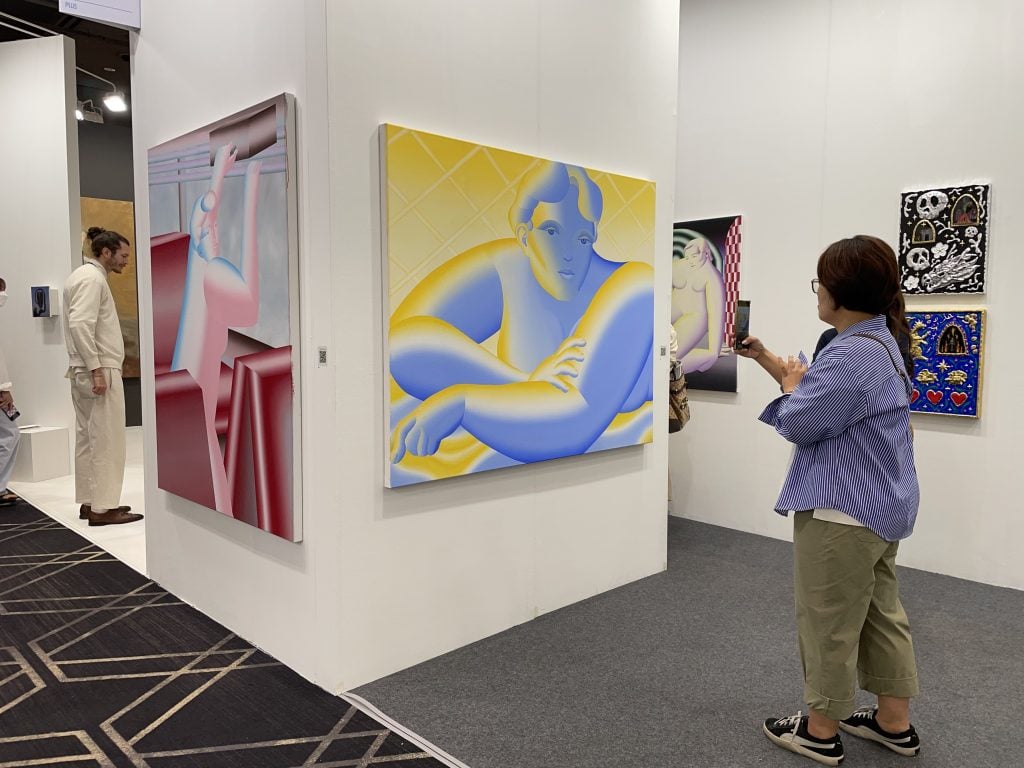
This Weekend Room at Kiaf Plus, Kiaf Seoul 2023. Photo: Vivienne Chow.
Kiaf Plus, a new section launched last year focusing on emerging talent and younger galleries, returned this year but joined the main Kiaf fair at Coex, rather than being isolated at an offsite venue. Jihyung Park, a curator at Seoul-based gallery This Weekend Room, which reprised its appearance at the Plus section this year, praised the organizers’ decision.
“Many foreign clients gave up visiting us last year. But this year we have more foreigners and they are interested in our artists. We have encountered a lot of collectors from Malaysia, mainland China, and Hong Kong,” she told Artnet News. The gallery showed works by three young Korean artists, sculptures and works on the wall by Hansaem Kim, Jinhee Kim’s enigmatic figurative paintings, and abstract paintings by Seoul Kim priced between €1,000 and €16,500. It successfully made some sales.
“We’ve heard that foreign galleries are doing better this year,” Park said. “Young galleries also find it easier to sell too. But it’s challenging to local galleries focusing on mid-career artists aged in their 40s. Their works are priced on a similar level as those by young artists at foreign galleries, and at a similar price level, people tend to buy from foreign galleries because of the brandname effect.”
Kiaf Seoul runs through September 10, Sunday, at Coex 1F, Hall A, B & Grand Ballroom, 513 Yeongdong-daero, Gangnam-gu, Seoul.